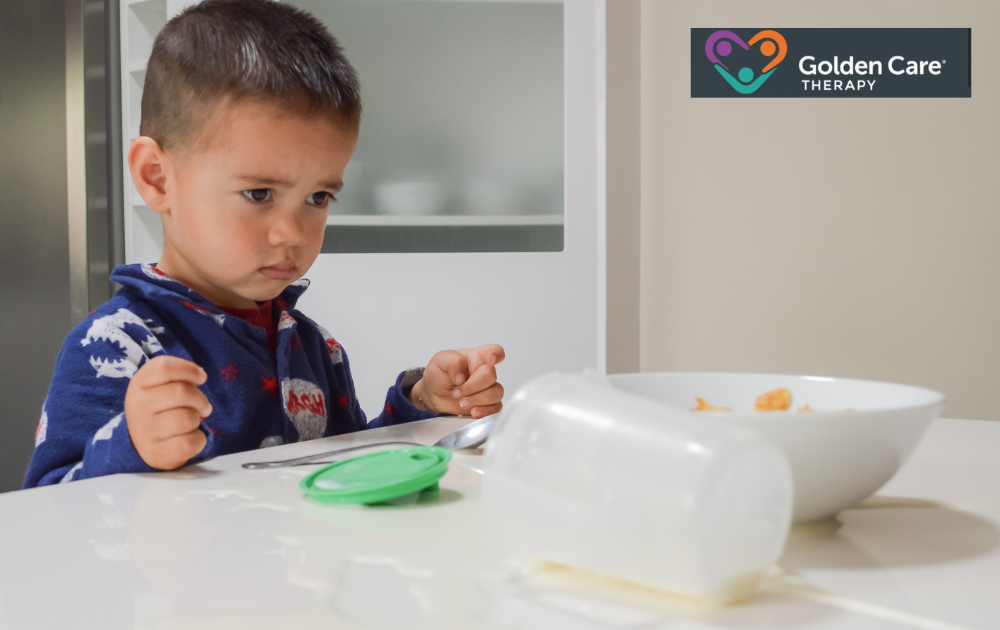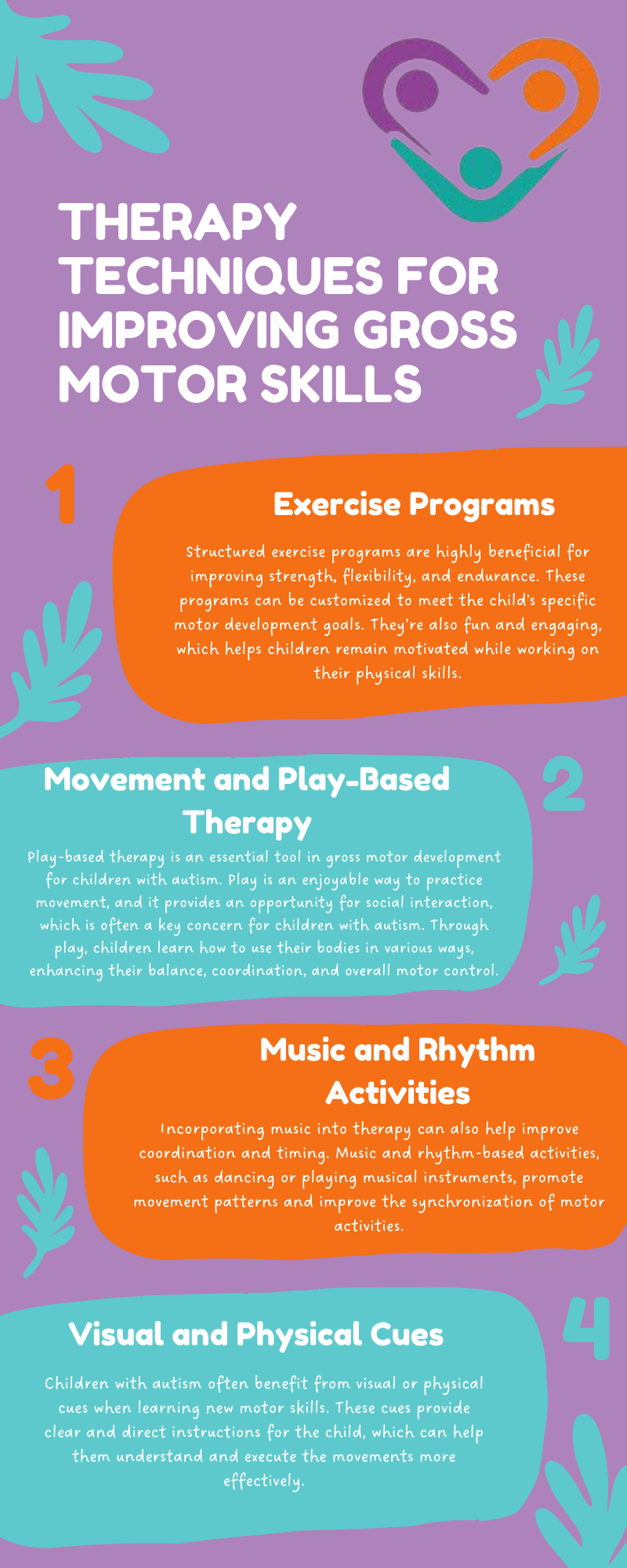Gross motor skills refer to the larger movements involving the use of muscles in the arms, legs, and torso. These skills are essential for activities in everyday life, such as walking, running, jumping, and even maintaining balance.
For autistic individuals, the development of gross motor skills can be delayed or affected, which may impact their ability to engage in activities that others may find effortless.
In autism therapy, there is a focus on improving these skills, helping individuals achieve greater independence and engage more fully in their environment. As such, we’re going to explore the importance of gross motor skills in individuals with autism, how therapy can help, and the strategies used to improve these skills.
The Importance of Gross Motor Skills for Children with Autism
Gross motor skills are crucial for children with autism because they support both physical and cognitive development. These skills allow children to navigate their environment, participate in recreational activities, and develop social connections. When children struggle with these skills, it can impact their self-esteem, social interactions, and overall independence.
For children with autism, difficulties in gross motor skills are often linked to sensory processing challenges, muscle tone issues, or coordination problems.
These challenges can make even simple tasks, like climbing stairs or kicking a ball, more difficult. Therefore, early intervention and consistent therapy are key to supporting their development.
Improving gross motor skills can also have a positive effect on other areas of development. For example, motor coordination and body awareness can influence social behaviors, such as playing games with peers, or academic tasks like writing or using a computer.
How Autism Therapy Can Address Gross Motor Skills
Autism therapy approaches are diverse, and many of them can be tailored to focus on improving gross motor skills. Among the most widely used therapies is Applied Behavior Analysis (ABA), which helps children with autism develop both fine and gross motor skills through systematic, structured interventions.
In addition to ABA therapy, therapies such as Occupational Therapy (OT) and Physical Therapy (PT) are often used to address specific motor skill challenges. These therapies focus on strengthening the muscles, improving coordination, and increasing the child’s ability to move in a controlled and purposeful way.
Physical Therapy
Physical therapy specifically targets the development of strength, balance, coordination, and mobility.
For children with autism, physical therapy may involve activities that help improve posture, stability, and flexibility. These exercises can be tailored to the child’s abilities and needs, whether they involve simple movements like crawling or more complex actions like climbing or running.
In physical therapy, therapists often use sensory integration techniques to help the child process input from their environment, making it easier to develop better control over their body. Sensory-based activities such as swinging, bouncing, or jumping on a trampoline can also promote the development of coordination and balance while also being enjoyable for the child.
Occupational Therapy
While occupational therapy is commonly associated with fine motor skills, it also plays a significant role in developing gross motor skills. An occupational therapist works with children on tasks that require large muscle groups, such as walking, climbing, or engaging in sports activities.
OT helps children with autism enhance their ability to perform day-to-day activities that require movement, which can improve their independence and self-confidence.
One aspect of occupational therapy for gross motor development is the use of play-based techniques. Play is a natural way for children to practice and improve their motor skills, and incorporating play into therapy encourages children to engage in activities that support physical and social development. This could include activities like playing tag, riding bikes, or participating in group sports.
Common Challenges with Gross Motor Skills in Autism
Children with autism often face specific challenges when developing gross motor skills. Understanding these challenges is essential to creating effective therapy plans. Let’s look at what these are.
Sensory Processing Issues
Many individuals with autism have sensory issues that affect their ability to perceive and respond to sensory information. For instance, they may be hypersensitive to touch, sound, or movement, which can make it harder to engage in physical activities.
For example, a child might avoid walking on uneven ground due to tactile sensations or might struggle with physical activities that involve speed, like running, because they have difficulty processing the sensory input.
Therapists may address these issues by incorporating sensory-friendly activities into the therapy sessions. These activities gradually introduce new sensory experiences to help the child become more comfortable with various types of sensory input.

Muscle Tone and Coordination Problems
Children with autism often experience low muscle tone (hypotonia), which makes it harder to control and coordinate their movements. They may appear clumsy or have difficulty completing tasks that require fine or gross motor skills.
For example, they might struggle with running, jumping, or catching a ball. This can lead to frustration or social withdrawal.
Therapists often design exercises to help children strengthen their muscles and improve their coordination. This may include exercises that promote joint stability and muscle endurance.
Strengthening exercises like wall push-ups or lifting light weights can improve muscle tone, while activities such as obstacle courses or games that involve catching or throwing help build coordination.
Difficulty with Balance and Posture
Balance and posture are essential components of gross motor development. Children with autism may have trouble with both, which can affect their ability to walk, run, or engage in group activities. These difficulties may be linked to issues with body awareness or muscle strength.
Improving balance often requires targeted interventions that encourage stability and posture control.
Therapists often use balance boards, stability balls, or other equipment designed to challenge a child’s balance in a safe environment. These activities build core strength and improve posture, which can help the child move with greater control and ease.
Therapy Techniques to Improve Gross Motor Skills
A variety of therapy techniques can be used to help children with autism develop better gross motor skills. These strategies incorporate different approaches based on the child’s unique needs.

The Role of Parents and Caregivers
Parents and caregivers play an integral role in supporting the development of gross motor skills in children with autism. Consistent practice at home can reinforce the skills learned in therapy sessions. Parents can encourage physical activities such as running, jumping, or playing catch.
Setting up a safe space at home for physical activities or incorporating outdoor play can also be beneficial.
Additionally, communication between parents and therapists is crucial for tracking progress and adapting therapy plans as needed. By being actively involved in their child’s therapy, parents and caregivers can help ensure their child continues to progress in developing gross motor skills.
Gross motor skills are essential for children with autism to lead independent, active lives. Through targeted therapy approaches such as ABA, OT, and PT, children can develop stronger, more coordinated bodies that allow them to engage more fully in daily activities and social interactions.
With the right support, children with autism can overcome challenges and achieve significant milestones in their gross motor development. At Golden Care Therapy, our skilled ABA therapists in Indiana are dedicated to providing personalized, high-quality care tailored to each child’s unique needs.
If you’re ready to help your child make progress, contact us today to learn more about our services and how we can support your family.
Sources:



